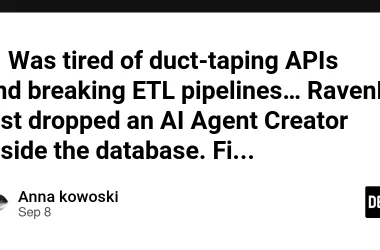If you’ve ever built a web app or worked with an API, you’ve probably seen things like 404 or 500 pop up. These numbers might seem like errors — and sometimes they are — but they’re actually just how servers communicate what’s going on.
In this post, we’ll walk through what HTTP status codes are, what the common ones mean, and why you should care about them as a developer.
So, what is a status code?
Whenever your browser or app sends a request to a server (like loading a webpage or submitting a form), the server sends back a response. Part of that response includes a status code — a three-digit number that gives a quick summary of what happened.
For example:
-
200means “everything went fine” -
404means “the thing you asked for doesn’t exist” -
500means “something broke on the server”
These codes are standardized and fall into five categories.
The different types (quick overview)
1xx – Just letting you know
These are informational. You’ll rarely see them directly, unless you’re digging deep into HTTP-level stuff.
2xx – Success
These are good. They mean the request worked.
-
200 OK– Basic success. -
201 Created– Something was successfully created (like a new user). -
204 No Content– Success, but there’s no data to send back.
3xx – Redirects
The server is telling the client to look somewhere else.
-
301 Moved Permanently– The resource has moved and it’s not coming back. -
302 Found– Temporary redirect. -
304 Not Modified– The client already has the latest version, no need to download again.
4xx – You messed up (client error)
These usually mean there’s something wrong with the request.
-
400 Bad Request– Malformed request. -
401 Unauthorized– You need to log in. -
403 Forbidden– You’re logged in, but not allowed to access this. -
404 Not Found– The resource doesn’t exist. -
429 Too Many Requests– Slow down, you’re sending too many requests too quickly.
5xx – We messed up (server error)
These mean the server failed to handle the request.
-
500 Internal Server Error– A general error on the server. -
502 Bad Gateway– The server got an invalid response from another server. -
503 Service Unavailable– The server is temporarily overloaded or down.
Why should you care?
If you’re building or using an API, handling status codes properly helps everything run more smoothly. It gives your frontend clear information about what went wrong (or right), and it makes debugging a lot easier.
For example, if your app gets a 403, you know it’s a permission issue. If it gets a 500, it’s probably something on the server that needs fixing.
It also helps when writing error handling code — you don’t want to treat every error the same.
How to practice
If you want to get better at this, try writing a simple API in something like Flask, Express, or Django. Send different types of requests and play with returning different status codes.
It’s one of those small things that makes you look like you know what you’re doing — and it’ll save you time when things break.
Let me know if you want a follow-up post on how to handle these codes in your own app logic, or how to structure proper error responses.






